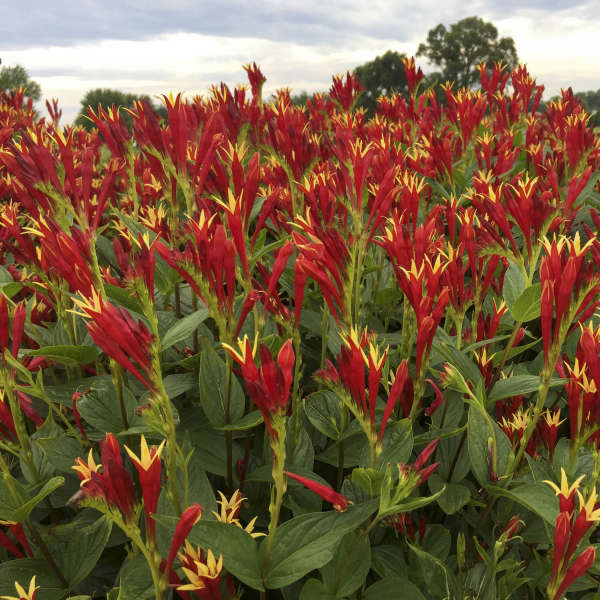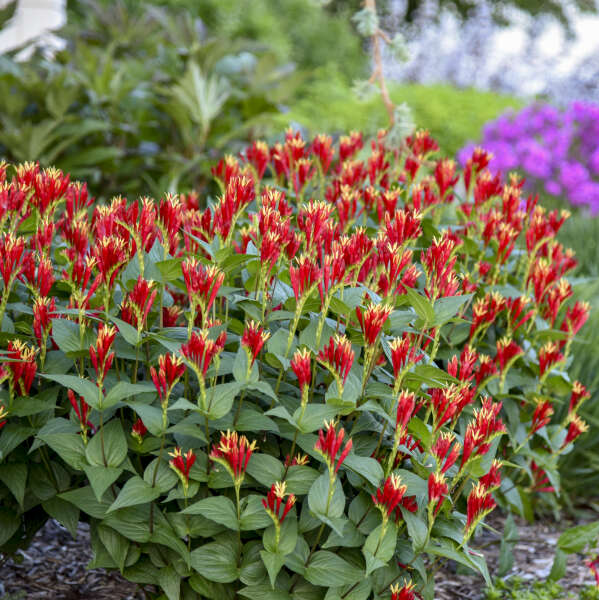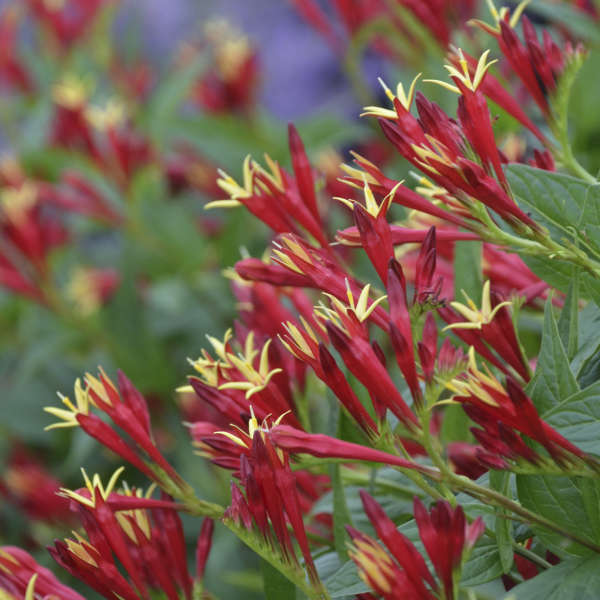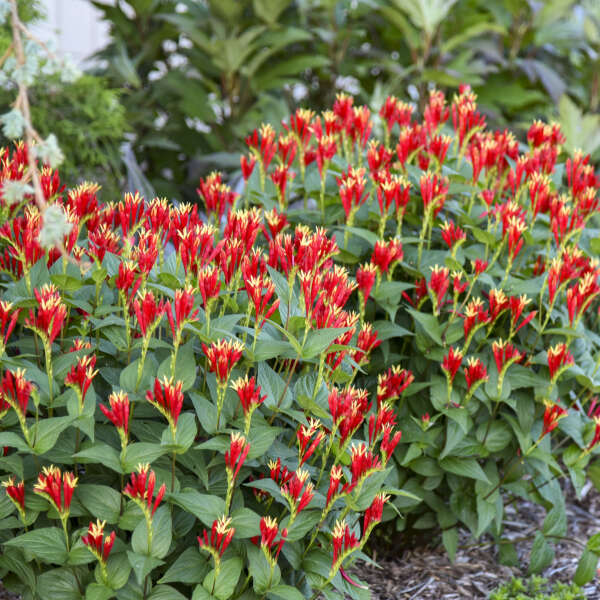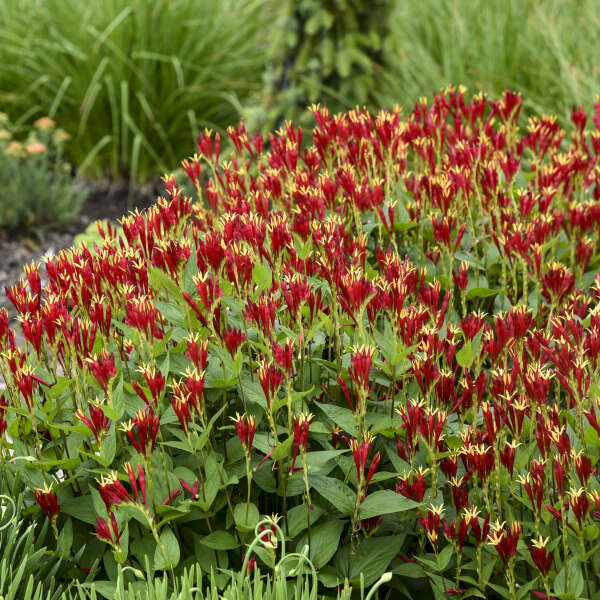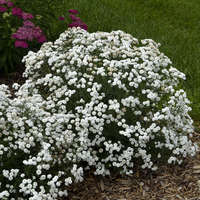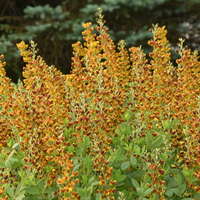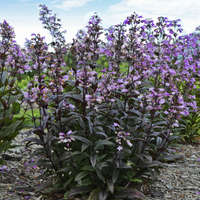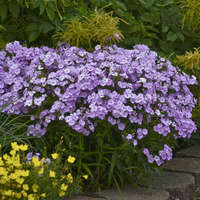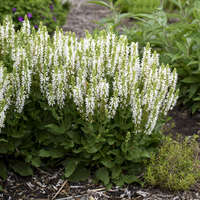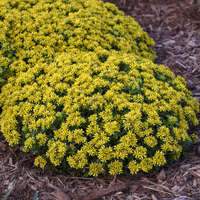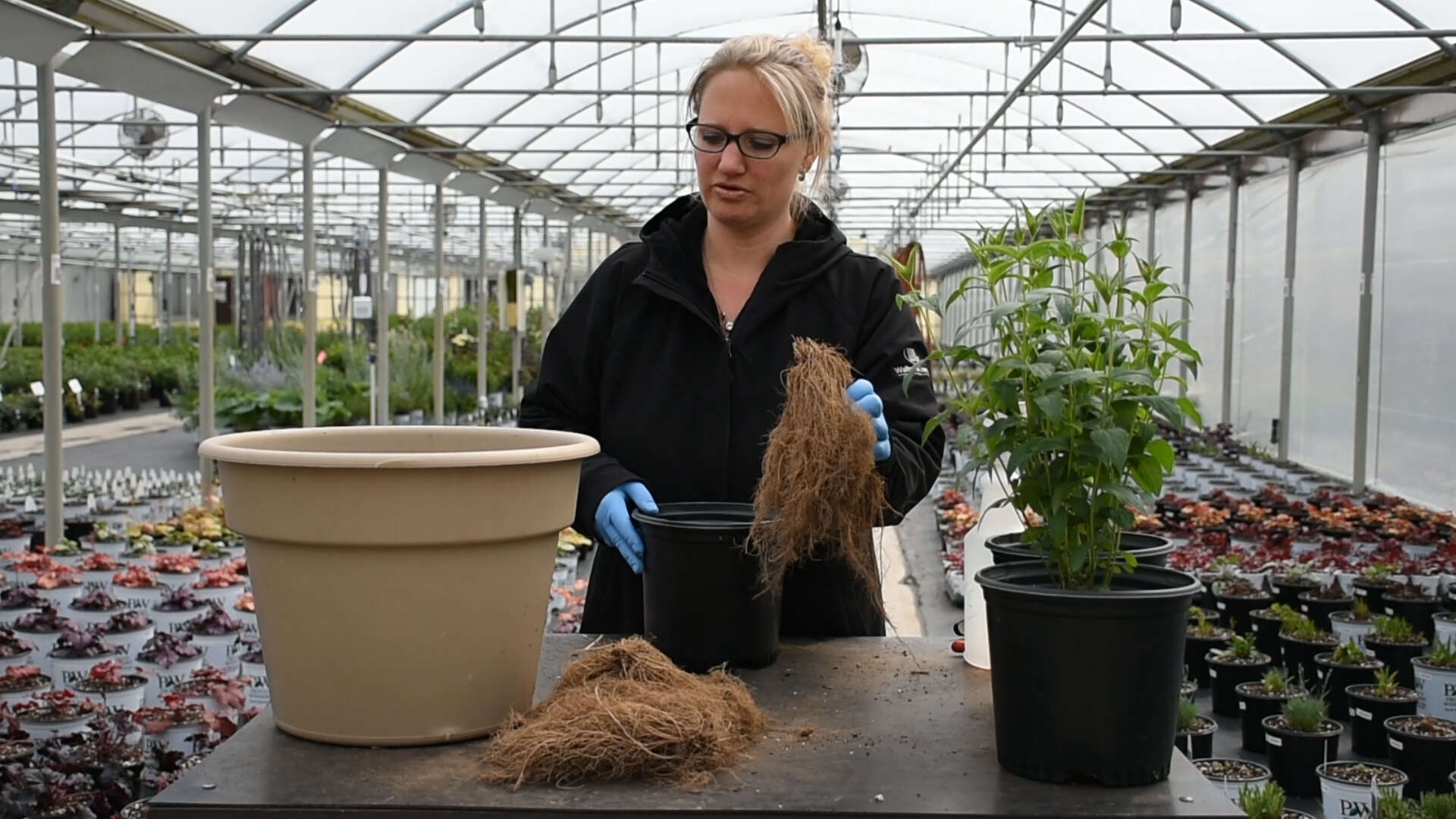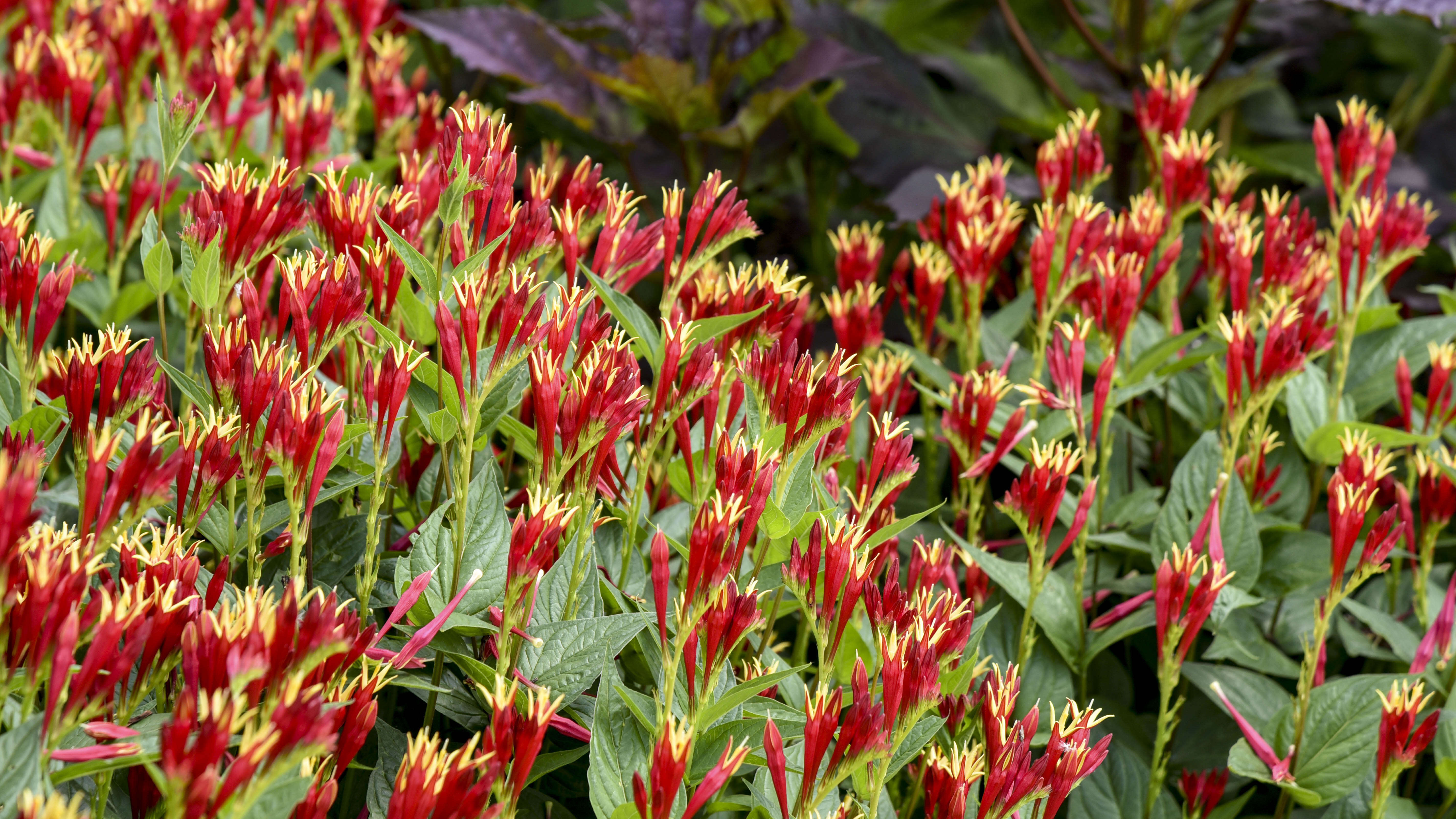Spigelia marilandica 'Little Redhead'

Common Name: Spigelia
Spigelia is underutilized in the landscape due to limited availability, but it's poised to make an explosion in popularity. Why? It's a very versatile perennial-it grows naturally in either sun or shade. This perennial can be found growing in the wild in woodlands and along streambanks throughout the Eastern United States. It's wildly popular among wildflower enthusiasts and highly sought after.
'Little Redhead' is a superior selection of the species, vegetatively propagated to ensure uniformity. Dark red tubular flowers with yellow interiors are produced above top of an upright clump of dark green, wedge-shaped leaves. Everyone who has seen this variety has loved it. This genus requires good drainage to thrive, so do not plant in areas with standing water.
128ct Plug Tray |
72ct Plug Tray |
Grade #1 Bare Root |
